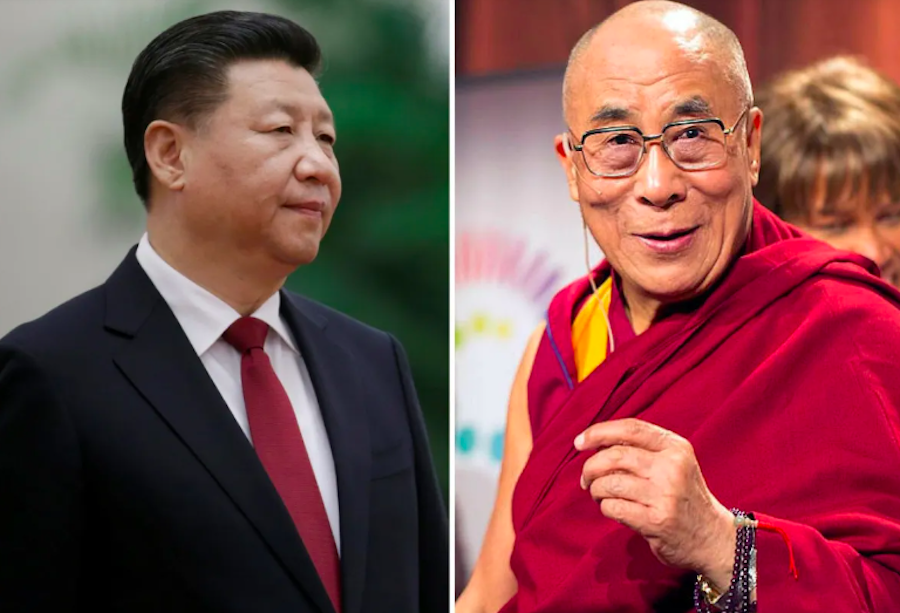By Brahma Chellaney
NEW DELHI: Sharpening Asian competition over energy resources, driven in part by high growth rates in gross domestic product and in part by mercantilist attempts to lock up supplies, has obscured another danger: Water shortages in much of Asia are beginning to threaten rapid economic modernization, prompting the building of upstream projects on international rivers. If water geopolitics were to spur interstate tensions through reduced water flows to neighboring states, the Asian renaissance could stall.
Water has emerged as a key issue that could determine whether Asia is headed toward mutually beneficial cooperation or deleterious interstate competition. No country could influence that direction more than China, which controls the Tibetan plateau — the source of most major rivers of Asia.
Tibet’s vast glaciers and high altitude have endowed it with the world’s greatest river systems. Its river waters are a lifeline to the world’s two most-populous states — China and India — as well as to Bangladesh, Myanmar, Bhutan, Nepal, Cambodia, Pakistan, Laos, Thailand and Vietnam. These countries make up 47 percent of the global population.
Yet Asia is a water-deficient continent. Although home to more than half of the human population, Asia has less fresh water — 3,920 cubic meters per person — than any continent besides Antarctica.
The looming struggle over water resources in Asia has been underscored by the spread of irrigated farming, water-intensive industries (from steel to paper making) and a growing middle class seeking high water-consuming comforts like washing machines and dishwashers. Household water consumption in Asia is rising rapidly, according to a 2006 U.N. report, but such is the water paucity that not many Asians can aspire to the lifestyle of Americans, who daily use 400 liters per person, or more than 2.5 times the average in Asia.
The specter of water wars in Asia is also being highlighted by climate change and environmental degradation in the form of shrinking forests and swamps, which foster a cycle of chronic flooding and droughts through the depletion of nature’s water storage and absorption cover. The Himalayan snow melt that feeds Asia’s great rivers could be damagingly accelerated by global warming.
While intrastate water-sharing disputes have become rife in several Asian countries — from India and Pakistan to Southeast Asia and China — it is the potential interstate conflict over river-water resources that should be of greater concern. This concern arises from Chinese attempts to dam or redirect the southward flow of river waters from the Tibetan plateau, where major rivers originate, including the Indus, the Mekong, the Yangtze, the Yellow, the Salween, the Brahmaputra, the Karnali and the Sutlej. Among Asia’s mighty rivers, only the Ganges starts from the Indian side of the Himalayas.
The lopsided availability of water within some nations (abundant in some areas but deficient in others) has given rise to grand ideas — from linking rivers in India to diverting the fast-flowing Brahmaputra northward to feed the arid areas in the Chinese heartland.
As water woes have been aggravated in its north due to environmentally unsustainable intensive farming, China has increasingly turned its attention to the bounteous water reserves that the Tibetan plateau holds. It has dammed rivers, not just to produce hydropower but also to channel waters for irrigation and other purposes, and is currently toying with massive interbasin and inter-river water-transfer projects.
After building two dams upstream, China is building at least three more on the Mekong, inflaming passions in Vietnam, Laos, Cambodia and Thailand. Several Chinese projects in west-central Tibet bearing on river-water flows into India, but Beijing is loath to share information.
Following flash floods in India’s northern Himachal Pradesh state, however, China agreed in 2005 to supply New Delhi data on any abnormal rise or fall in the upstream level of the Sutlej River, on which it has built a barrage. Discussions are on to persuade it to share flood-control data during the monsoon season on two Brahmaputra tributaries, Lohit and Parlung Zangbo, as it has done since 2002 on the Brahmaputra River, which it has dammed at several places upstream.
The 10 major watersheds formed by the Himalayas and Tibetan highlands spread out river waters far and wide in Asia. Control over the 2.5 million-square-km Tibetan plateau gives China tremendous leverage, besides access to vast natural resources. Having extensively contaminated its own major rivers through unbridled industrialization, China now threatens the ecological viability of river systems tied to South and Southeast Asia in its bid to meet its thirst for water and energy.
Tibet, which existed independently up to 1950, comprises approximately one-fourth of China’s land mass today, having given Han society, for the first time in history, a contiguous frontier with India, Myanmar, Bhutan and Nepal.
Tibet traditionally encompassed the regions of the central plateau, Kham and Amdo. After annexing Tibet, China separated Amdo (the present Dalai Lama’s birthplace) as the new Qinghai province, made the central plateau and eastern Kham the Tibet Autonomous Region, and merged the remaining parts of Tibet into the Chinese provinces of Sichuan, Yunnan and Gansu.
The traditional Tibet is not just a distinct cultural entity but also a natural plateau, the future of whose water reserves is tied to ecological conservation. As China’s hunger for primary commodities has grown, so too has its exploitation of Tibet’s resources. And as water woes have intensified in several major Chinese cities, a group of ex-officials have championed the northward rerouting of the waters of the Brahmaputra in a book enlighteningly titled “Tibet’s Waters Will Save China.”
Large hydro projects and reckless exploitation of mineral resources already threaten Tibet’s fragile ecosystems, with ore tailings beginning to contaminate water sources. Unmindful of the environmental impact of such activities in pristine areas, China has now embarked on constructing a 108-km paved road to Mount Everest, located along the Tibet-Nepal frontier. This highway is part of China’s plan to reinforce its claims on Tibet by taking the Olympic torch to the peak of the world’s tallest mountain before the 2008 Beijing Games.
As in the past, no country is going to be more affected by Chinese plans and projects in Tibet than India. The new $ 6.2 billion Gormu-Lhasa railway, for example, has significantly augmented China’s rapid military-deployment capability against India just when Beijing is becoming increasingly assertive in its claims on Indian territories. This hardline stance, in the midst of intense negotiations to resolve the 4,057-km Indo-Tibetan border, is no less incongruous than Beijing’s disinclination to set up, as agreed during its president’s state visit to New Delhi last November, a joint expert-level mechanism on interstate river waters.
Contrast China’s reluctance to establish a mechanism intended for mere “interaction and cooperation” on hydrological data with New Delhi’s consideration toward downstream Pakistan, reflected both in the 1960 Indus Waters Treaty (which reserves 56 percent of the catchment flow for Pakistan) and the more recent acceptance of World Bank arbitration over the Baglihar Dam project in Indian Kashmir.
No Indian project has sought to reroute or diminish trans-border water flows, yet Pakistan insists on a say in the structural design of projects upstream in India. New Delhi permits Pakistani officials to inspect such projects. By contrast, Beijing drags its feet on setting up an innocuous interaction mechanism. Would China, under any arrangement, let Indian officials inspect its projects in Tibet or accept, if a dispute arose, third-party adjudication?
If anything, China seems intent on aggressively pursuing projects and employing water as a weapon. The idea of a Great South-North Water Transfer Project diverting river waters cascading from the Tibetan highlands has the backing of President Hu Jintao, a hydrologist who made his name through a brutal martial-law crackdown in Tibet in 1989. In crushing protesters at Tiananmen Square two months later, Deng Xiaoping actually borrowed a leaf from Hu’s Tibet book.
The Chinese ambition to channel the Brahmaputra waters to the parched Yellow River has been whetted by what Beijing touts as its engineering feat in building the giant $ 25 billion Three Gorges Dam project, which has officially displaced a staggering 1.2 million citizens. While China’s water resources minister told a Hong Kong University meeting last October that, in his personal opinion, the idea to divert waters seems not viable, the director of the Yellow River Water Conservancy Committee said publicly that the mega-plan enjoys official sanction and may begin by 2010.
The Brahmaputra (Yarlung Tsangpo to Tibetans) originates near Mount Kailash and, before entering India, flows eastward in Tibet for 2,200 km at an average height of 4,000 meters, making it the world’s highest major river. When two other tributaries merge with it, the Brahmaputra becomes as wide as 10 km in India before flowing into Bangladesh.
The first phase of China’s South-North Project calls for building 300 km of tunnels and channels to draw waters from the Jinsha, Yalong and Dadu rivers, on the eastern rim of the Tibetan plateau. Only in the second phase would the Brahmaputra waters be directed northward. In fact, Beijing has identified the bend where the Brahmaputra forms the world’s longest and deepest canyon just before entering India as holding the largest untapped reserves for meeting its water and energy needs.
While some doubts do persist in Beijing over the economic feasibility of channeling Tibetan waters northward, the mammoth diversion of the Brahmaputra could begin as water shortages become more acute in the Chinese mainland and the current $ 1.2 trillion foreign-exchange hoard brims over. The mega-rerouting would constitute the declaration of a water war on lower-riparian India and Bangladesh.
Brahma Chellaney, a professor of strategic studies at the privately funded Center for Policy Research in New Delhi, is the author, most recently, of “Asian Juggernaut: The Rise of China, India and Japan.”









